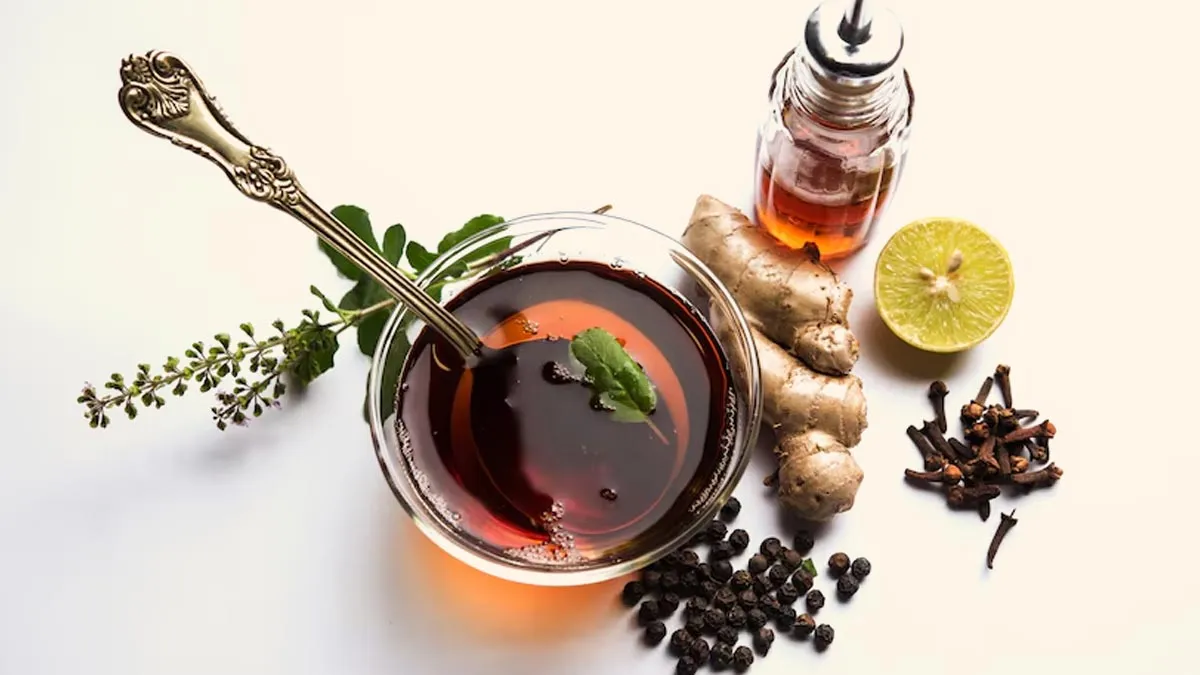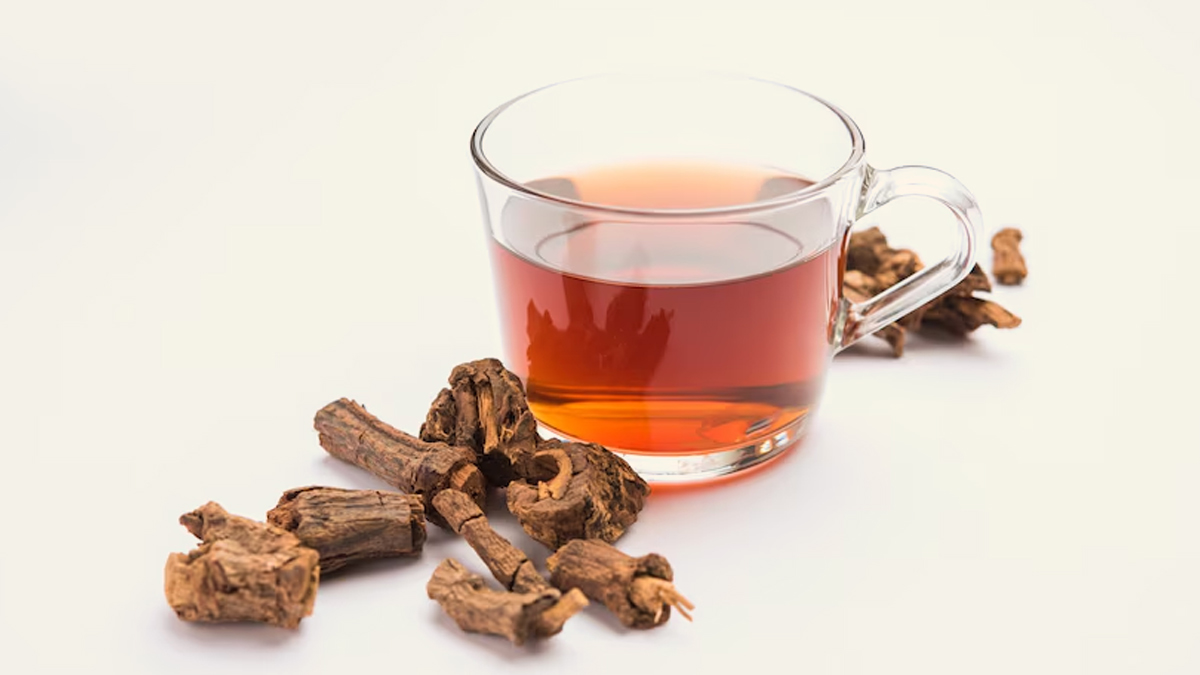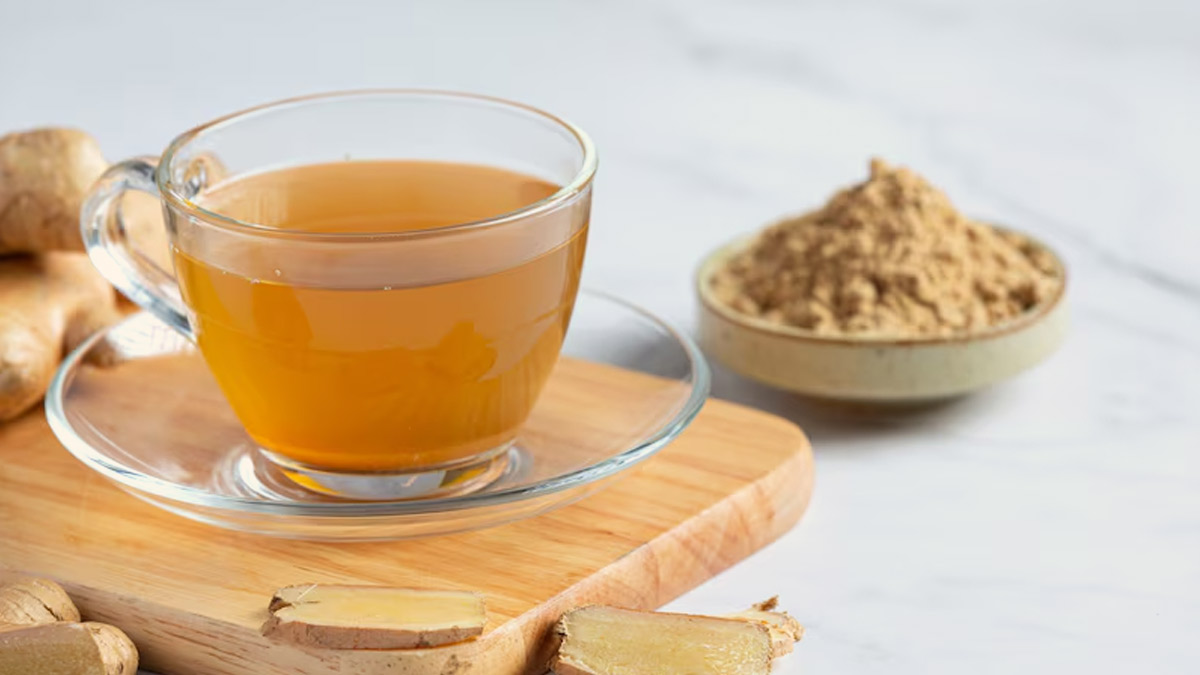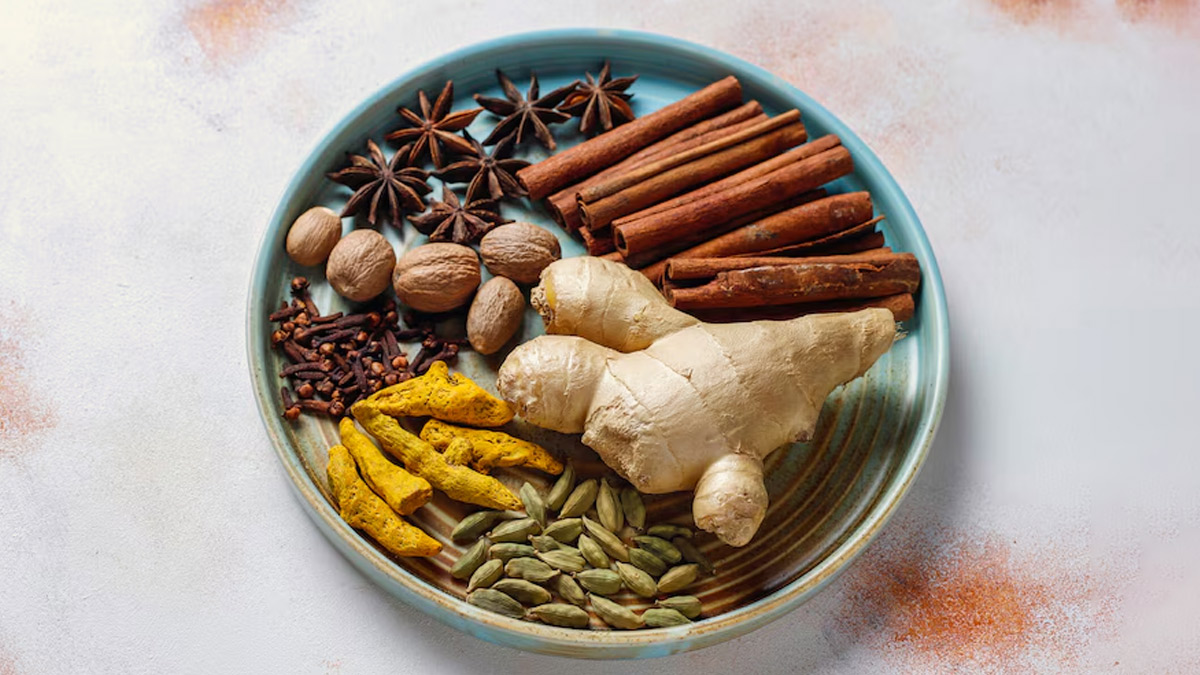
Feeling the winter chill or battling the season’s common colds? You might be reaching for a warm cup of kadha, an Ayurvedic herbal decoction known for its powerful health benefits. But how often should you be sipping on this healing brew to truly feel its effects? Should it be a one-time fix or a daily habit? Do not worry, we got you covered.
Table of Content:-
OnlyMyHealth team interacted with Dr Snigdha Vartak, BAMS, Chief Consultant, Samanwaya Ayurveda Clinic, who shared her knowledge on how much kadha you should consume, when to drink it, and what makes it such a powerful remedy. Ready to make kadha a part of your wellness routine? Let’s dive in!
What is Kashayam?

Dr Vartak explains, "Kashayam is a generic term for a variety of medicinal decoctions in Ayurveda. It is also known as kadha or kwath. The term 'kwatha' is derived from the root word 'kwathana,' which literally means the process of boiling." These decoctions are typically made by boiling dry or fresh herbs in water, making their active water-soluble principles easily available for absorption.
“Kashayam is one of the easiest and most effective ways to gain maximum benefits from herbs,” says Dr Vartak. Depending on the potency of the herbs, the water-to-herb ratio can vary, such as 1:4, 1:8, or 1:16. Kashayam can be tailored using single herbs or a blend of multiple herbs to address specific health concerns.
When and How Often Should You Consume Kadha?
The frequency of kadha intake depends on your body type (prakriti), digestion, and the purpose of consumption. Dr Vartak advises that "The kwatha should be taken after food, with a daily dose of 24-48 ml divided into 2-3 portions. Kadha of Ushna (hot) potency can generally be taken in such divided doses, while kadha of sheetal (cold) potency is best consumed under a practitioner’s guidance, especially during winters."
Overconsumption should be avoided, as it may disrupt the body’s natural dosha balance. The shelf life of prepared kadha is only 24 hours, so it is best consumed fresh.
Therapeutic Benefits of Kadha

Kadha is not just a beverage; it is a therapeutic preparation. A study published by the Journal of Research in Medical states that kadha helps in boosting the immunity and fighting off viral infections.
According to Dr Vartak, "The kwatha is utilised both internally and externally for therapeutic purposes." Some of its key benefits include:
- Relief from cough and cold
- Easing throat congestion
- Reducing joint inflammation
- Alleviating anxiety, stress, and mood swings
- Addressing seasonal depression
- Managing headaches and low blood pressure
The versatility of kadha makes it a go-to remedy for a range of ailments. However, if symptoms persist even after consumption, Dr Vartak recommends consulting an Ayurvedic practitioner.
Also read: Ayurvedic Kadhas: How Nature's Remedy Help for Seasonal Cough and Cold Relief
How to Prepare Kadha at Home

Dr Vartak shares a simple method for preparing kashayam:
Soak dry or fresh herbs in water overnight or for at least 30 minutes.
Boil the mixture on a low flame until the volume is reduced to half or one-quarter.
Let it cool slightly before straining and consuming warm.
Recipes for Winter Wellness
Here are a couple of kadha recipes shared by Dr Vartak:
Kapha-Vata Balancing Kadha
- Ginger (grated): ½ inch
- Cardamom powder: ¼ tsp
- Cinnamon stick: ¼ inch
- Black peppercorns: 2
- Water: 2 cups
Soak cinnamon and peppercorns in water for 30 minutes. Add grated ginger, boil, and reduce to one cup. Add cardamom powder and serve warm.

Kadha for Cough and Cold
- Black pepper: 4-5
- Cumin seeds: ½ tsp
- Tulsi leaves: 4-5
- Dry ginger powder: 3 pinches (or fresh ginger: ¼ inch)
- Turmeric powder: ¼ tsp
Slightly crush ingredients and soak in water for 30 minutes. Boil until reduced by half, strain, and consume hot.
A Word of Caution
While kadha is beneficial, it is essential to ensure the ingredients suit your body type. As Dr Vartak highlights, "If your health issues do not subside even after the consumption of homemade kashayas, please seek Ayurvedic advice."
Consuming kadha 2-3 times a day in divided doses can be a beneficial addition to your wellness routine. However, moderation and proper guidance are key to reaping its full benefits.
Also watch this video
How we keep this article up to date:
We work with experts and keep a close eye on the latest in health and wellness. Whenever there is a new research or helpful information, we update our articles with accurate and useful advice.
Current Version